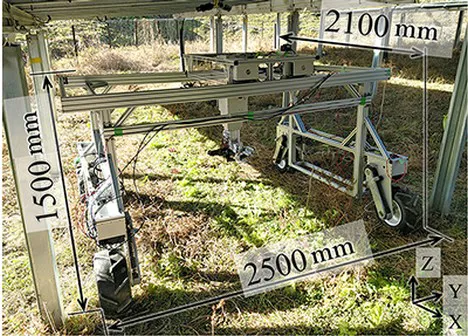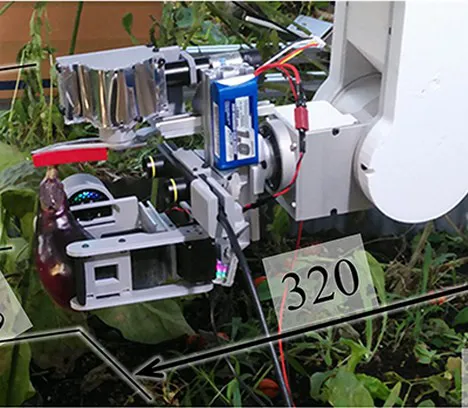Synecoculture, a new farming method, involves growing mixed plant species together in high density. However, it requires complex operation since varying species with different growing seasons and growing speeds are planted on the same land. To address this need, researchers have developed a robot to sow, prune, and harvest plants in dense vegetation. Its small, flexible body will help large-scale Synecoculture. This is an important step towards achieving sustainable farming and carbon neutrality.

Synecoculture is a new agricultural method advocated by Dr. Masatoshi Funabashi, senior researcher at Sony Computer Science Laboratories, Inc. (Sony CSL), in which various kinds of plants are mixed and grown in high-density, establishing rich biodiversity while benefiting from the self-organizing ability of the ecosystem. However, such dense vegetation requires frequent upkeep—seeds need to be sown, weeds need to be pruned, and crops need to be harvested. Synecoculture thus requires a high level of ecological literacy and complex decision-making. And while the operational issues present with Synecoculture can be addressed by using an agricultural robot, most existing robots can only automate one of the above three tasks in a simple farmland environment, thus falling short of the literacy and decision-making skills required of them to perform Synecoculture. Moreover, the robots may make unnecessary contact with the plants and damage them, affecting their growth and the harvest.
With the rising awareness of environmental issues, such a gap between the performance of humans versus that of conventional robots has spurred innovation to improve the latter.
A group of researchers led by Takuya Otani, an Assistant Professor at Waseda University, in collaboration with Sustainergy Company and Sony CSL, have designed a new robot that can perform Synecoculture effectively. The robot is called SynRobo, with "syn" conveying the meaning of "together with" humans. It manages a variety of mixed plants grown in the shade of solar panels, an otherwise unutilized space. An article describing their research was published in Volume 13, Issue 1 of Agriculture, on 21 December 2022. This article has been co-authored by Professor Atsuo Takanishi, also from Waseda University, other researchers of Sony CSL, and students from Waseda University.
Otani briefly explains the novel robot's design. "It has a four-wheel mechanism that enables movement on uneven land and a robotic arm that expands and contracts to help overcome obstacles. The robot can move on slopes and avoid small steps. The system also utilizes a 360o camera to recognize and maneuver its surroundings. In addition, it is loaded with various farming tools—anchors (for punching holes), pruning scissors, and harvesting setups. The robot adjusts its position using the robotic arm and an orthogonal axes table that can move horizontally."
Besides these inherent features, the researchers also invented techniques for efficient seeding. They coated seeds from different plants with soil to make equally-sized balls. These made their shape and size consistent so that the robot could easily sow seeds from multiple plants. Furthermore, an easy-to-use, human-controlled maneuvering system was developed to facilitate the robot's functionality. The system helps it operate tools, implement automatic sowing, and switch tasks.
The new robot could successfully sow, prune, and harvest in dense vegetation, making minimal contact with the environment during the tasks because of its small and flexible body. In addition, the new maneuvering system enabled the robot to avoid obstacles 50% better while reducing its operating time by 49% compared to a simple controller.

"This research has developed an agricultural robot that works in environments where multiple species of plants grow in dense mixtures," Otani tells us. "It can be widely used in general agriculture as well as Synecoculture—only the tools need to be changed when working with different plants. This robot will contribute to improving the yield per unit area and increase farming efficiency. Moreover, its agricultural operation data will help automate the maneuvering system. As a result, robots could assist agriculture in a plethora of environments. In fact, Sustainergy Company is currently preparing to commercialize this innovation in abandoned fields in Japan and desertified areas in Kenya, among other places."
Such advancements will promote Synecoculture farming, with the combination of renewable energy, and help solve various pressing problems, including climate change and the energy crisis. The present research is a crucial step toward achieving sustainable agriculture and carbon neutrality. Here's hoping for a smart and skillful robot that efficiently supports large-scale Synecoculture.
For more information:
Waseda University
waseda.jp
